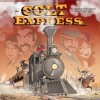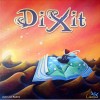DC90
gamer level 3
785 xp
785 xp
followers
5
5
Use my invite URL to register (this will give me kudos)
https://boardgaming.com/register/?invited_by=dpcurran
profile badges
...
...
...
...
recent achievements

Gamer - Level 3
Earn Gamer XP to level up!
Earn Gamer XP to level up!

Amateur Grader
Grade 10 more reviews or tips by clicking "Yes" or "No" in response to the question "Was this helpful?"
Grade 10 more reviews or tips by clicking "Yes" or "No" in response to the question "Was this helpful?"

I'm Gettin' the Hang of It
Claim that you have played a game today by clicking the "Played Today!" button on a game page 10 times.
Claim that you have played a game today by clicking the "Played Today!" button on a game page 10 times.

I Got What I Wanted
Add a game to your Owned list that was previously in your Wish list.
Add a game to your Owned list that was previously in your Wish list.



























Railways of the World
I find it hard to give any game a 10/10 score, due to the fact that it means that there isn’t any way to improve the game. However, I find this is an exception. Railways of the World is a tremendous game where players take the place of a railroad baron looking to expand their rail network across the map and delivering goods in the process, trying to make the most money and steaming along the scoring tracker.
Based on the popular PC franchise ‘Railroad Tycoon’, this game depicts the PC game with the base game of Railways of the World including a giant map of Eastern U.S. and another smaller map of Mexico.
Setting up the game is probably the worst part of this game. I only say this because if you play the Eastern U.S. map with 4 or more players, you’ll be looking to find extra space on the table to put all the pieces on. The map is 91cm x 76cm, which is great for the size to play on but also not so great if you have a smaller table as you won’t fit everything on. I had to extend my dining table to accompany this and to fit all the tiles/trains/cards etc. and I thought I had a large table to start with.
Gameplay starts with players choosing between two baron cards given to them, each having a different goal which will score points at the end of the game. Starting with no money, players then bid on the ‘First Player’ card to go first in the round. Positioning can be crucial, as once the first player is determined, play proceeds clockwise once the round has started. If you’re last to play, especially early on, it may end up ruining your plans to begin with.
All players will take bonds (debt) out at the start of the game to fund their railroad early on and most likely further on in the game. Income and dividends are paid out at the end of the turn, so the more bonds you have, the more you’ll have to pay back to the bank. If you’re not careful with your money, you’ll find you have to take a bond out to pay the dividends for your bonds, sending you in a spiral of debt. Income is determined by how far you are along the score tracker. Further along = more income, though this will reverse and you’ll get less income when you surpass a certain point on the tracker. This is a great mechanic will allows other players to earn more if they’re behind the player in the lead, allowing them to have more money to play with, which could be beneficial in circumstances.
Each turn consists of 3 rounds, so each player will have 3 rounds of actions in a turn. At the end of the 3 rounds, the turn is over and that’s when income and dividends are paid out, and the ‘First Player’ card is bid for again.
During your 3 rounds of actions, you can:
1. Buy and install rail.
2. Take an ‘Operations Card’ which can be beneficial in most cases.
3. Urbanise a town into a city, allowing you and other players to deliver goods to and from it.
4. Upgrade your train, allowing you to deliver goods to cities farther away.
5. Deliver goods from one city to another, scoring points in the process.
When players decide to deliver goods, a goods cube from the city they’ve taken it from is removed from the game and put into a goods cube bag. If all cubes on a city are taken and delivered, an empty city marker is placed on the city. Players can still deliver to the city but the city has nothing on offer to take. The game ends when the last ’empty city’ marker has been placed on a city. ‘Empty City’ markers differ with the number of players, but it’s common once one goes, it can start to spiral fast and a number of them can go in quick succession, especially later in the game.
Once the last ’empty city’ marker has been placed, players get to the end of the turn and a full turn after (which could be up to 6 actions, depending on when it is placed in the turn). This gives you time to plan ahead to make the last minute deliveries.
The game is scored by the players score on the score tracker minus the number of bonds they own. After that, players reveal their baron cards to see if they have completed it. If you have, you score the points on the card. If not, nothing happens and you stay where you are. The player who wins is the player furthest along the tracker.
Overall, all the games I’ve played so far have been really intense at times but also very enjoyable. Introducing this to a number of other gamers and non-gamers, they’ve enjoyed it and it’s one of those games which you say ‘play again?’ once you’ve finished. Of course, it takes a few hours to play, depending on number of players, however, I find it’s such an enthralling game to play, that it deserves the rating I’ve given it, with the enjoyment adding to the rating. With plenty of expansions too, the base game is good enough for me to want to invest in the expansions.
A top quality game and you’ll enjoy chugging along the tracks and so will your friends!